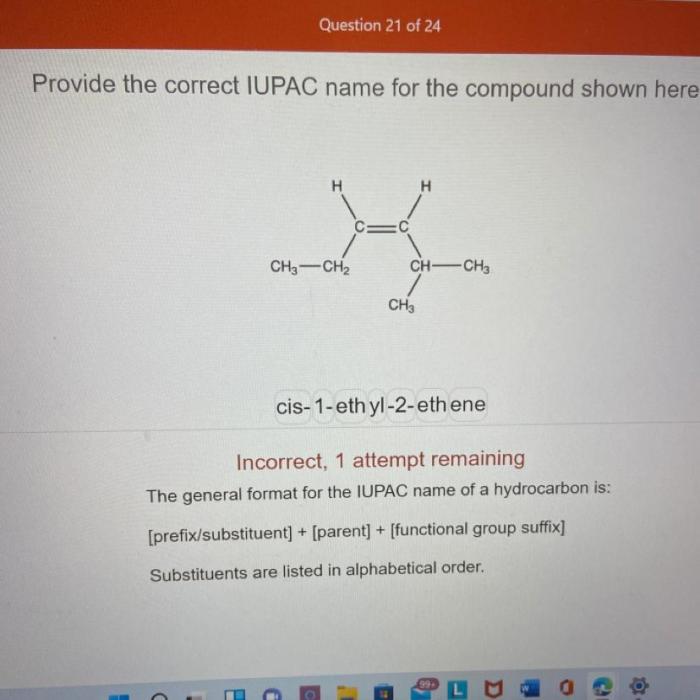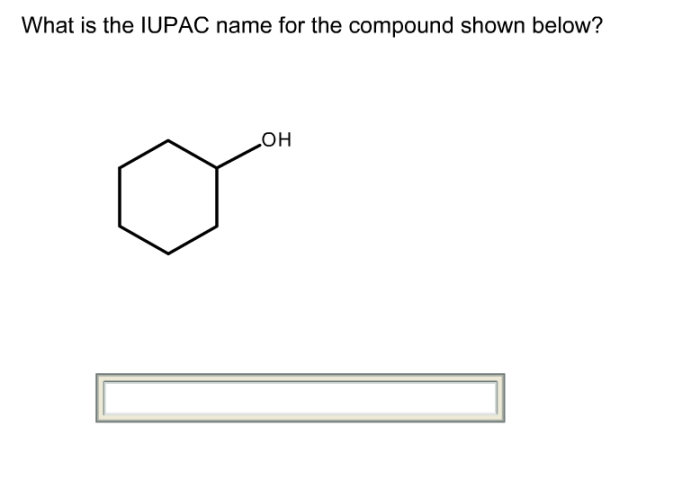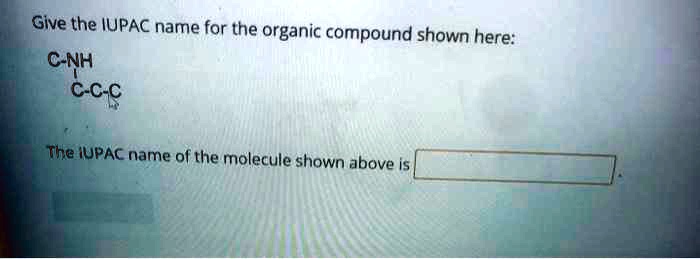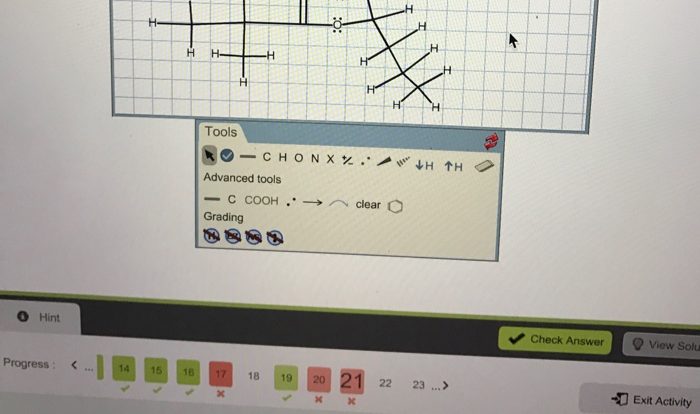What is the IUPAC name for the compound shown here? The International Union of Pure and Applied Chemistry (IUPAC) has established a systematic nomenclature system for naming organic compounds, ensuring clear and consistent communication among chemists worldwide.
IUPAC nomenclature provides a set of rules and guidelines that govern the naming of organic compounds based on their structural features. This system allows chemists to identify and describe compounds accurately and unambiguously, facilitating effective communication and collaboration in research and industry.
1. IUPAC Nomenclature

The International Union of Pure and Applied Chemistry (IUPAC) is the international body responsible for establishing and maintaining the standards for chemical nomenclature, terminology, and symbols. IUPAC nomenclature is a systematic and logical system for naming organic compounds, which ensures that each compound has a unique and unambiguous name.
IUPAC nomenclature is important because it provides a common language for chemists to communicate about organic compounds. It allows chemists to quickly and easily identify and describe compounds, regardless of their structural complexity or the language they speak.
Rules and Guidelines for IUPAC Nomenclature, What is the iupac name for the compound shown here
- The parent chain is the longest continuous chain of carbon atoms in the compound.
- The root name of the compound is based on the number of carbon atoms in the parent chain.
- Substituents are groups of atoms that are attached to the parent chain.
- Prefixes are used to indicate the number and position of substituents.
- Suffixes are used to denote the functional groups present in the compound.
2. Structural Analysis: What Is The Iupac Name For The Compound Shown Here

To determine the IUPAC name of a compound, we first need to identify the functional groups present in the compound. The functional group is the atom or group of atoms that gives the compound its characteristic chemical properties.
Once we have identified the functional groups, we need to determine the parent chain. The parent chain is the longest continuous chain of carbon atoms in the compound. The root name of the compound is based on the number of carbon atoms in the parent chain.
The next step is to number the carbon atoms in the parent chain. The carbon atoms are numbered starting from the end of the chain that is closest to the functional group.
Finally, we need to locate and identify any substituents or branches. Substituents are groups of atoms that are attached to the parent chain. Branches are chains of carbon atoms that are attached to the parent chain.
3. IUPAC Name Generation

Once we have identified the structural features of the compound, we can construct the IUPAC name. The IUPAC name is based on the following rules:
- The root name of the compound is based on the number of carbon atoms in the parent chain.
- Prefixes are used to indicate the number and position of substituents.
- Suffixes are used to denote the functional groups present in the compound.
- Any necessary prefixes or suffixes are included to account for unsaturation or other special characteristics.
4. Illustrative Examples

Here are some examples of IUPAC names for various organic compounds:
- Methane
- Ethane
- Propane
- Butane
- Pentane
User Queries
What is the purpose of IUPAC nomenclature?
IUPAC nomenclature provides a systematic and standardized method for naming organic compounds, ensuring clear and consistent communication among chemists.
How are IUPAC names generated?
IUPAC names are constructed based on the identified structural features of the compound, including the parent chain, functional groups, and substituents.
Why is IUPAC nomenclature important?
IUPAC nomenclature facilitates effective communication and collaboration in chemistry by providing a common language for naming and identifying organic compounds.
